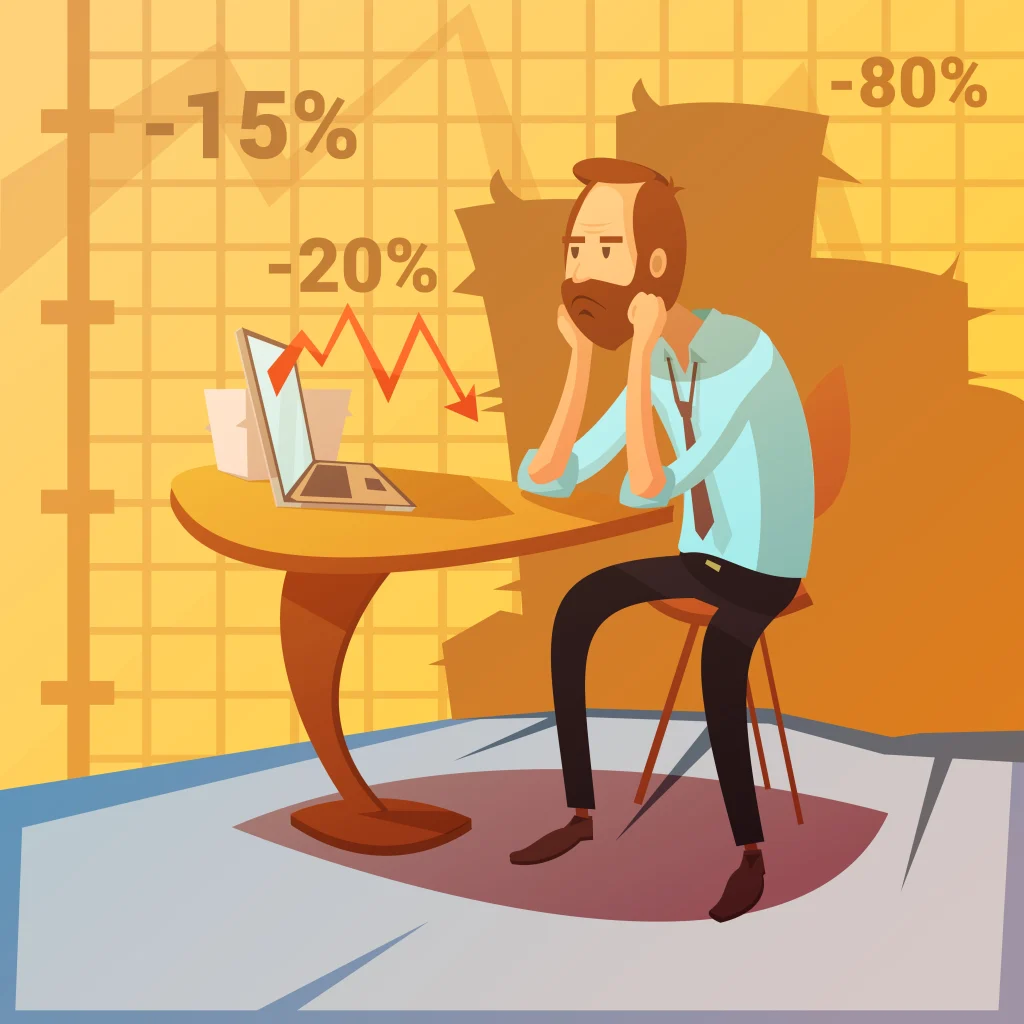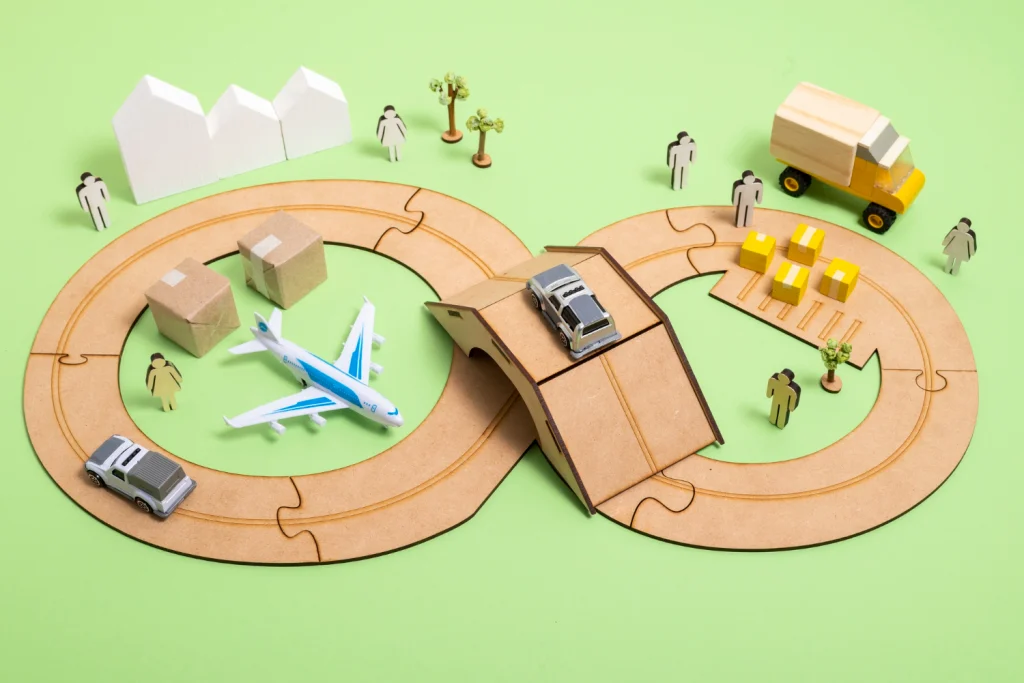Starting an online business is exciting, but it can also feel overwhelming. There are so many things to think about, e.g., what to sell, how to build a website, how to find customers, and how to grow. These questions can make anyone feel stuck or confused, especially in the beginning.
But the truth is, you are not alone, as every successful ecommerce business has gone through the same path. As you move forward, you’ll notice that things get clearer, and your confidence grows.
With the right mindset and a little knowledge on ecommerce business life cycle, you can turn your idea into a profitable venture.
Let’s look at each step along the journey, one by one, in the simplest way possible.
What is Ecommerce Business Life Cycle (EBLC)?

The ecommerce business life cycle is the step-by-step journey that an online business goes through. It starts from the moment you have a business idea and continues through planning, launching, growing, scaling, and finally reaching maturity.
Each of these stages has its goals, tasks, and challenges. By understanding this cycle, you can avoid mistakes, plan better, and grow your business with more confidence.
Instead of jumping into everything at once, you focus on one step at a time. This way, you build a strong foundation and stay prepared for what comes next.
6 Ecommerce Business Life Cycle Stages
Business life cycle is somewhat similar to the product life cycle. The only major difference is that, unlike ecommerce products, an ecommerce business isn’t destined to exit the market.
Although a tons of ecommerce businesses fails every day, they are the reason for any wrongdoing of the stages mentioned below.
1. Laying the Groundwork: Ideation and Planning

Every business starts with an idea. A great place to begin might be something you want to sell, something you enjoy, or something missing in the market.
Now, do some quick research. Check if people have already bought similar products. Look at reviews to see what they like or dislike.
You may also need to study your competitors to see what they are doing and if you can offer any better. Even small changes, like eco-friendly packaging or faster delivery, can make your offer stand out.
Once you feel confident, pick a platform like EasyCommerce. Name your store, get a domain, and register your business. Decide how you’ll source products and price them wisely.
Then build a simple, clean website. Add payment and shipping options and test everything well.
2. Launch: Opening Your Online Store to the World

Your store is ready. Now it’s time to launch. Start by sharing your storefront with your friends and family with affiliation opportunity. You can also share it on social media for quicker outreach. Offer discounts like ‘first 50 customers get 50% off’ to attract early buyers.
In this stage, your focus should be on getting your first 10–50 orders to see if things are working as expected. This will also help you get crucial questions answered: Are your payments going through? Is shipping smooth? Are customers happy?
You can use the information acquired in this soft-launching session to conduct improvements where deemed necessary. Fix the bugs, then go big. That way, when more people arrive, everything works better.
3. Initial Struggles: The Learning Curve

It might sound harsh, but even with all your hard work, your business can still struggle at first. Sales may come in slowly, and some visitors might leave without buying. But you should know that these are completely normal.
This stage is all about learning. You find out what your customers like, what problems they face, and what needs to change. Maybe your product photos aren’t clear. Maybe your shipping is too slow. Or maybe your price is too high.
Use tools like Google Analytics to see what people do on your website. Where do they drop off? Which pages work best? Ask your early buyers for honest feedback. Every small insight counts.
In short-
- Track user behavior to spot weak areas.
- Improve your product pages based on feedback.
- Try small changes instead of big overhauls.
- Stay patient because progress often starts slowly.
#DidYouKnow?
When Jeff Bezos started Amazon in 1994, it was just an online bookstore run from his garage. For years, the company lost money while reinvesting everything into growth. In fact, Amazon didn’t turn a profit until 2001, seven years after launch!
4. Growth: Bringing in More Customers

You’ve made your first sale – that’s a massive feat to achieve. Now it’s time to grow your business.
Focus on improving your appearance on the search engine for related searches. This helps people find your site through Google or other search engines. You can also write helpful blog posts that answer questions your customers may have.
Email marketing is another proven strategy to reach out to potential leads and convert them into customers. Send welcome emails, product tips, or special offers. Don’t forget to ask for reviews, as good reviews build trust and bring in more buyers.
You can also try running targeted paid ad campaigns on Facebook and Google. This way, you could reach specific people who are interested in your products or service niche.
5. Scaling: Growing Your Business

When growth seems most evident, that’s when you start scaling. And you do it by hiring helping hands, automating tasks, and focusing on what brings in the most money.
Look at your best-selling products and push them more. Explore other sales channels like Amazon, Etsy, or wholesale to maximize the sales opportunities. Sticking with just your website limits your growth and may even halt your business if anything unexpected happens to it.
As you push for growth, some parts of your business need extra attention. If you ignore them, your growth efforts can backfire and end up hurting your business instead. A few such examples are-
- Product Quality: Make sure your products meet customer expectations and stay consistent.
- Marketing Spend: Monitor how much you’re spending on ads and what results you’re getting.
- Profit Margins: Keep track of your earnings after costs to ensure your business stays healthy.
- Customer Reviews: Read feedback to spot issues early and build trust with future buyers.
6. Maturity: Staying Profitable and Relevant

At this stage, your business is stable. You have repeat customers, strong brand trust, and steady income. But that doesn’t mean you can let it walk on its own.
Remember: Getting to the top is easy; staying there is the hard part.
In this stage, you have to stay in touch with your customers as much as possible. Offer loyalty rewards or create a referral program. Watch out for the latest trends in the market and update your website frequently with trendy products.
The goal is to keep things fresh for the customers to feel attentive to your store. That’s why you must try new product ideas or bundles.
One last thing, in ecommerce, the market is always evolving. New competitors will show up every now and then. So, keep learning, experimenting, and improving. Even small changes can keep your business moving forward.
Things to Consider Before You Start
If you’re planning to start an ecommerce business, it’s important to pause and think things through first. Before jumping in, assess yourself for these key criteria:
- Time: Taking an ecommerce business from idea to maturity takes time, sometimes years. If you can’t give it regular attention, growth will be slow.
- Money: You’ll need money to get started and keep things running. Profits don’t come right away, so plan for a few months (or more) of expenses and know where your cash will come from.
- Skills: Ecommerce requires both business and digital skills. Be ready to learn things like website management, marketing, and customer service along the way.
- Support: A support system consisting of friends, family, or community can lift your spirits during the early tough times. It’s not like you’ll need them every day, but having someone in your corner helps a lot.
Final Thoughts
The ecommerce business life cycle shows you the big picture of how an ecommerce store grows. It starts with an idea, turns into a real store, and grows into a brand. Each stage has its own challenges, but also its own rewards. By knowing what to expect, you can prepare better, avoid common mistakes, and build a business that lasts.
Take it one step at a time. Don’t rush. Learn as you go. And remember, the journey matters just as much as the results.
Good luck with your ecommerce journey!
Frequently Asked Questions (FAQs)
How long does it take to build a successful ecommerce business?
There’s no absolute duration for building a successful ecommerce business. It can take anywhere from a few months to several years. It depends on your product, market demand, and how much time and effort you invest.
What are the common mistakes in the ecommerce growth stage?
Spending too much on ads, ignoring customer feedback, or scaling too fast, etc. are some of the most common mistakes in the growth stage.
How to know the right time to scale an ecommerce business?
The first condition of scaling an ecommerce business is that it has to be stable in terms of sales numbers, profit margin, and a minimal brand image.
Trying to scale too early, without proper systems, can lead to failure instead of progress.
Why do ecommerce businesses fail before reaching maturity?
A common reason for ecommerce business failure is skipping key stages like research, testing, and proper planning. Lack of marketing knowledge limits their reach, and scaling too soon can weaken the foundation, which leads to ultimate failure.

